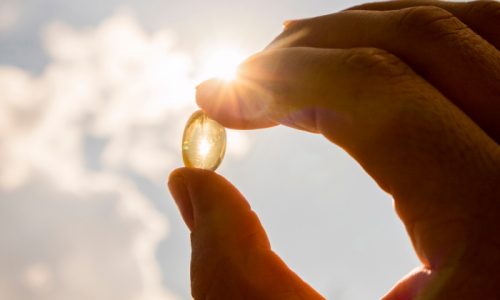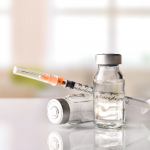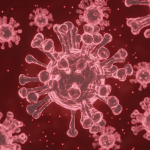- The causes of adult-onset MS are well researched and thought to be a combination of genetic factors, infectious exposures, and other environmental factors such as low sun exposure, low UVR exposure and low vitamin D levels. This current research study is believed to be the first to explore environmental factors that may contribute to the development of MS specifically in children.
- Recruited to this study were children with MS across the USA exploring links between time spent outdoors, ultraviolet radiation (UVR) exposure and sun protection usage in the first year after birth and the year before the first demyelinating event of MS.
- The researchers found that spending more than 30 minutes outdoors during weekends and holidays in summer, and residing in a sunnier location, were associated with a reduced risk of developing MS in children.
MS is most commonly diagnosed between 20 and 40 years of age; however, a small proportion of people (5-10%) have their first demyelinating event before 18. Children usually follow a highly inflammatory path in the early years, although over time, they typically take longer to reach disability than people with adult-onset MS. This is partly due to more effective neuroplasticity and recovery in younger brains. Factors contributing to the onset of MS in adults have been rigorously researched and include genetic predisposition, exposure to infections, low UVR exposure, low vitamin D levels and insufficient sun exposure in childhood. Study researchers hypothesised that low sun exposure and low UVR exposure might also be associated with paediatric-onset MS and set out to explore this theory.
What did the study investigators do?
Many prominent neurologists specialising in paediatric MS were involved in this study, together with researchers from the Australian National University (ANU) in Canberra, collecting data from 16 centres spread all over the USA, both east and west coasts, and north and south at various latitudes. This helped to enhance the reliability of the results over such a large country, with varying local climates and environmental exposures. The study comprised 332 children diagnosed with MS or experiencing a first demyelinating event before 18 years. Their results were compared against 534 controls (children without MS) who were recruited from the same hospitals as the children with MS, either as siblings, or attending the same hospital for other reasons. This was important to the results, as both the patients and the control cases were also sex and age-matched and exposed to the same sun and UVR conditions. A survey completed by the parents determined time spent outdoors in various months in the first year of life and at specific ages until the child’s diagnosis. The use of sun protection was also recorded, along with the ambient UVR dose based on their home latitude and longitude over their lifetime, vitamin D levels and other variables such as exposure to tobacco smoke, race, obesity, sun sensitivity and antibody levels to the Epstein-Barr virus (EBV). The ANU researchers used a complex but robust statistical package, led by Australian Professor Robyn Lucas to explore variables independently and against each other to determine the impact of the sun and UVR exposure.
What did the study results show?
The average time from diagnosis to study recruitment for children with MS was just over seven months. Children with MS were compared against the healthy controls using the variables described above. Results showed that children with MS were more likely to have been exposed to tobacco smoke in their first year of life than in control cases. They were also more likely to have been overweight at some stage of their childhood, which is consistent with recent research suggesting that childhood obesity and smoking contribute to the development and progression of MS in adults. Notably, antibodies against the EBV were higher amongst children with MS than children without MS (the controls), also consistent with research in adults.
Children with MS were more likely to have spent less time outside during the summer weekends and holidays than healthy controls. They were also less likely to use sun protection than the controls (possibly from going out less), although both groups were exposed to similar doses of ambient UVR. Blood levels of vitamin D were higher in the MS group, most likely because they were given vitamin D supplements following diagnosis. For analysis purposes, time spent outdoors in the year after birth and the year prior to MS diagnosis was categorised as: less than 30 minutes, 30 minutes to 1 hour, 1 to 2 hours and, greater than 2 hours. The researchers found a dose-dependent response to sun exposure to be protective against the development of MS. This means that compared to time outdoors of less than 30 minutes, 30 minutes to 1 hour outside increased the protection, and 1 to 2 hours increased it even further. However, spending over 2 hours outside daily elicited no further benefit.
How does this study help our understanding of environmental risk factors in MS?
Given that MS in children under 18 years is not common, the large study group of 332 children diagnosed with MS provides a contextually significant study in history. The researchers stopped short of making recommendations on optimal sun exposure and the use of sunscreen, as ambient UVR doses vary so much in relation to a person’s location of residence and the time of the year. However, they have suggested that investigating these factors in paediatric MS offers a valuable opportunity to understand the contributing factors to the development of MS, particularly environmental exposures, primarily because the window between exposure and disease onset is significantly narrower in children than in adults. The researchers suggest that regular time in the sun of at least 30 minutes daily during summer and using sun protection as needed, might be a worthwhile intervention to reduce the incidence of paediatric-onset MS, particularly in first degree relatives (parents, offspring and siblings) of people with MS. We are proud that our fellow Australian researchers from ANU were integral to this significant body of work.






